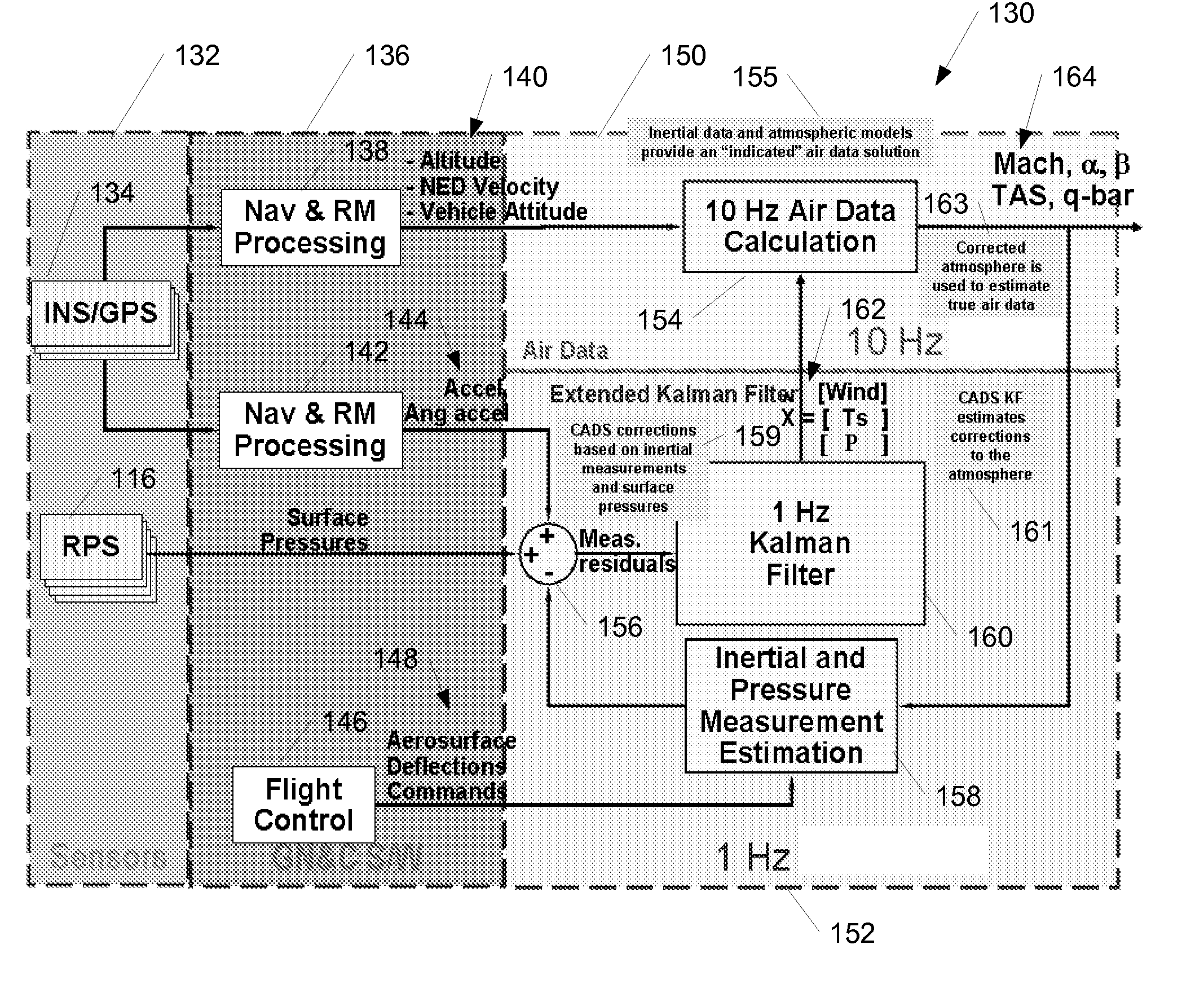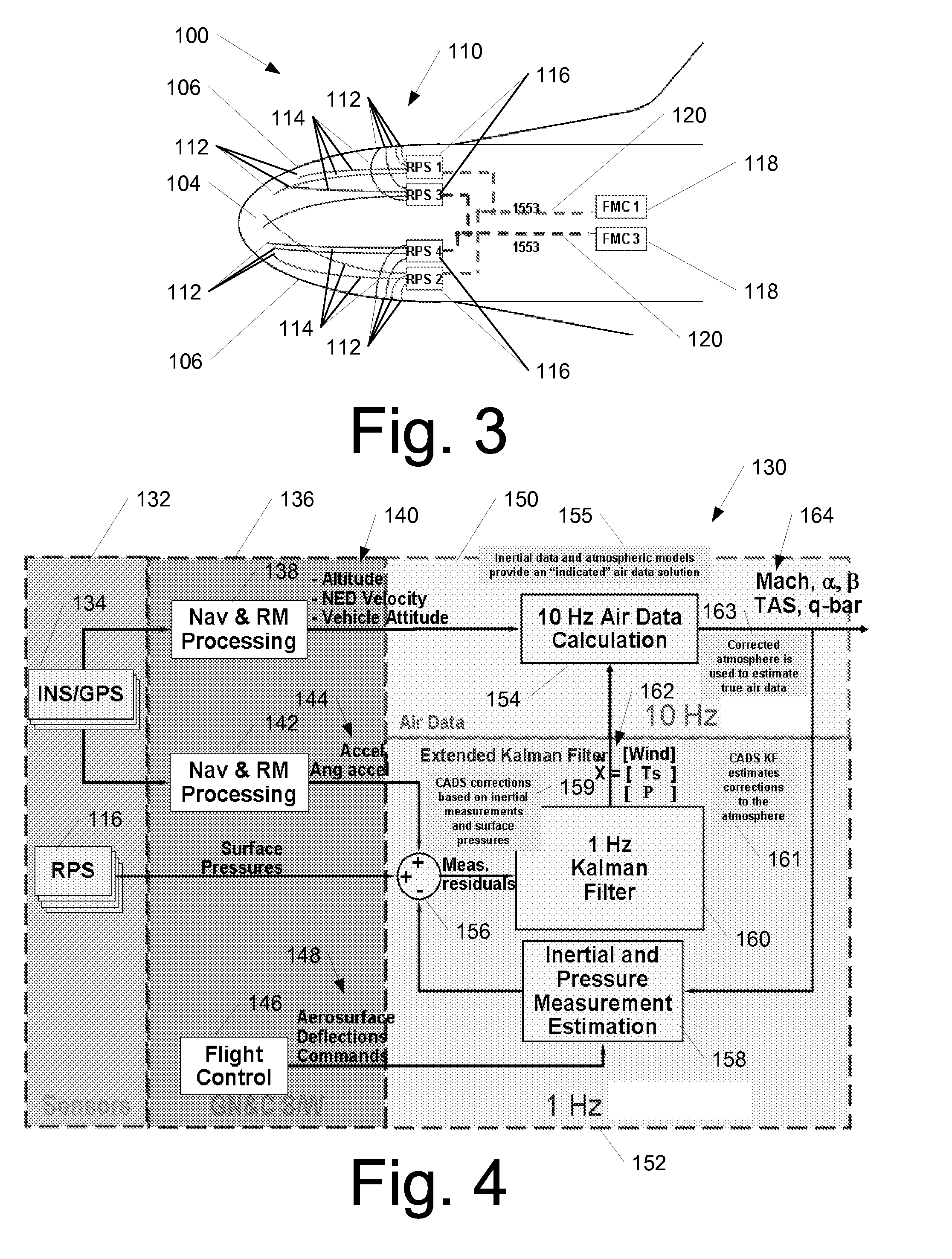Methods and systems for calculating atmospheric vehicle air data
a technology for atmospheric vehicles and air data, applied in the field of flight vehicles, can solve the problems of requiring valuable space in the aircraft, requiring a large amount of calibration of deployable probes, and affecting the safety of aircraft,
- Summary
- Abstract
- Description
- Claims
- Application Information
AI Technical Summary
Benefits of technology
Problems solved by technology
Method used
Image
Examples
Embodiment Construction
[0021]The present invention relates to methods and systems for calculating air data of atmospheric vehicles, including vehicle attitude and velocity relative to the atmospheric air mass. Many specific details of certain embodiments of the invention are set forth in the following description and in FIGS. 1-8 to provide a thorough understanding of such embodiments. One skilled in the art, however, will understand that the present invention may have additional embodiments, or that the present invention may be practiced without several of the details described in the following description.
[0022]In general, embodiments of the present invention use a software algorithm to combine measurements from an inertial navigation system (INS) with measurements from flush pressure taps to calculate an aircraft's complete air data state with fidelity high enough to support autonomous guidance and control of the aircraft. The positioning of the taps on the aircraft's surface is flexible, allowing them...
PUM
 Login to View More
Login to View More Abstract
Description
Claims
Application Information
 Login to View More
Login to View More - R&D
- Intellectual Property
- Life Sciences
- Materials
- Tech Scout
- Unparalleled Data Quality
- Higher Quality Content
- 60% Fewer Hallucinations
Browse by: Latest US Patents, China's latest patents, Technical Efficacy Thesaurus, Application Domain, Technology Topic, Popular Technical Reports.
© 2025 PatSnap. All rights reserved.Legal|Privacy policy|Modern Slavery Act Transparency Statement|Sitemap|About US| Contact US: help@patsnap.com



